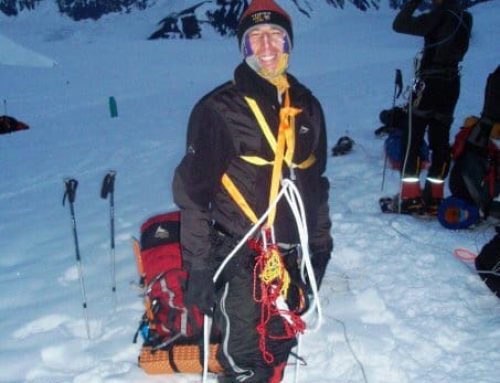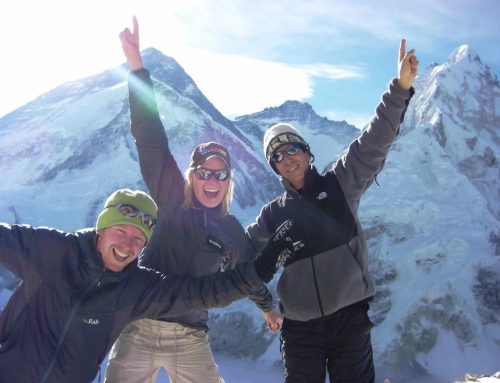Between 22,000′ and 26,000′ on Everest, I spent time thinking about the similarities of the mountain and leadership. When your own life and goal are in danger and success is not guaranteed, you have to both lead, manage yourself and the situation – along with what you can control and what you cannot.
- Set big bold transformational goals. They have to be so hairy and audacious that few either want to attempt nor have the resources or ambition to do so. Set this goal so that is easily understood by yourself or the extended team and it is clear about what the goal is for that particular summit or initiative.
- You can never over-prepare. Whether it is organizational alignment or gear-lists, the preparation aspect is the most important. Knowing where you want to go, how to get there and making sure everyone has the right equipment, tools or clothing cannot be over-estimated.
- The team matters – it does take a village. The team will help see you to the top and keep you grounded at the same time. This team, which may include your climbing buddies, guides and Sherpas or partners, suppliers and back-end groups is the key to your own success. No one does it alone though there are moments when the decision and strength comes from you personally.
- Patience is always required. Growing to be a $1B or $10B company or summiting Mt. Everest are not much different in that it takes time. Five years of planning and two months of climbing or scaling the company over a decade are not much different. There will be good days and bad days but you have to carry on – patience is indeed a virtue, along with drive and perseverance.
- Success requires sacrifice and choice. Along the journey, you, the team or company will have to make personal sacrifices and choose to do certain things and what you will not do. No one or any company has ever achieved something super-big without deciding that they were going to forgo other projects – knowing that there is an end-goal in mind.
- Sometimes you have to be selfish. This was one of my own revelations from Everest and controversial to some. Even if you live a self-less life there will be moments of truth where you have to take an organizational or group or company or own decision that has consequences on others to get to the set-goal. It may not be as life threatening as to clip out of a fallen climber that cannot be saved or to carry on to the summit when the day is not right for others – but in the best Ayn Rand tradition, selfishness is not necessarily a bad thing when required.
- The greater the reward, the greater the investment and risk. The bigger the mountain, the bigger the ROI, the more you will have to risk and either bet your life or bet the company. No growth is no fun and actually has a greater risk than making these big bets. BAU (Business As Usual) will not, by definition, move you forward.
- Expect the unexpected. Storms happen, equipment breaks, competitors ramp-up, and the market changes – if you are well grounded and clipped-in properly, you will weather these events when others fail. Not everything goes smoothly and if it did, there would be no leadership required along the way.
- Exploit your strengths, do what works for you and not for someone else. We all have done amazing things during our lives and in our organizations as well. While a strength overdone is a weakness, you have to do what you know best and not what works for another. For me, I am good at reverse splits in marathons – I will finish faster in the second-half when others start out strong and fade in the last 13 miles. When climbing, saving energy for the summit push and not trying to be like a genetically engineered rock-star specimen works for me.
- One step, one day, one milestone at a time – celebrate along the way. It is a very long journey and it’s really easy to get depressed, have despair and be desperate along the way – it’s normal. All you can do is to meet your development dates, your forecast, or get through tough climbing days to the next camp – knowing a rest day is in the cards can provide motivation to the team. And never forget to say “thank you” a lot and recognize the team, leaders and yourself for what you have achieved – no one can ever take it away from you.








